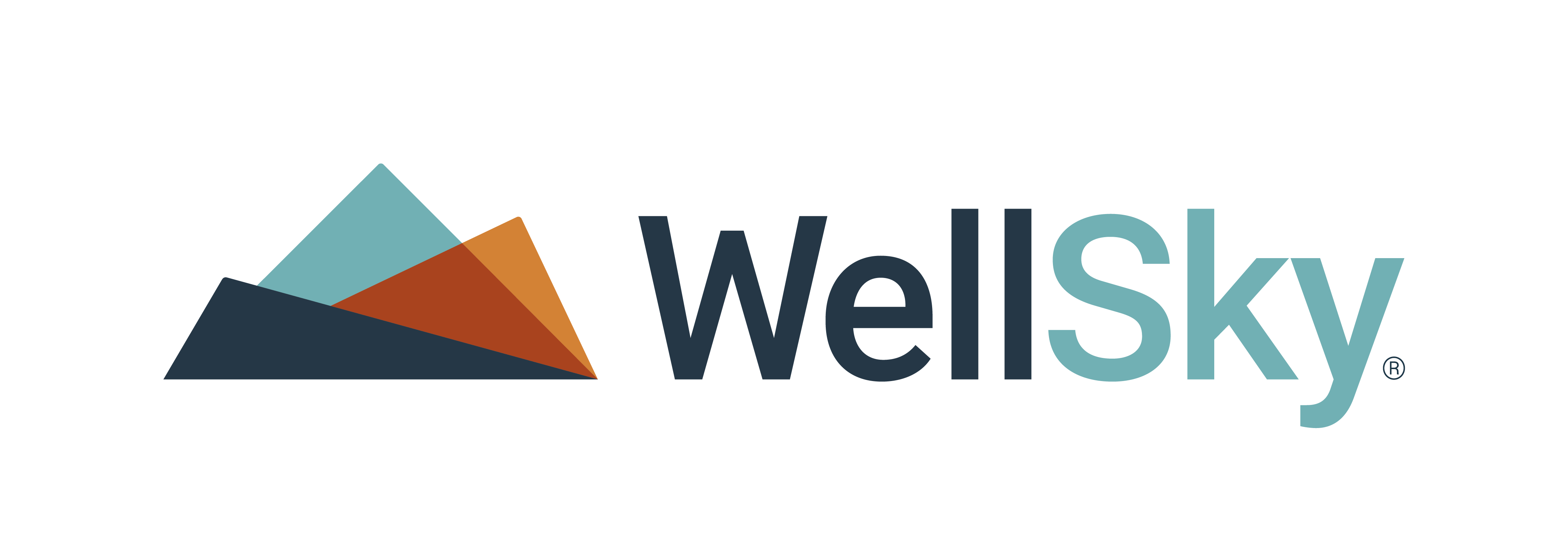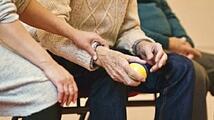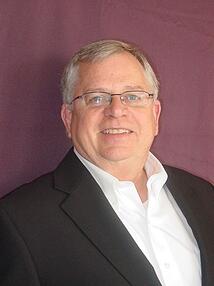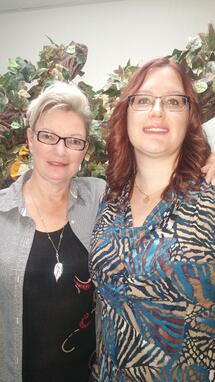On January 6th, 2015 ClearCare Online, a private-duty home care software provider, along with Harvard Medical School's Department of Health Care Policy and Right at Home announced a joint partnership on a program titled 'The Intervention in-Home Care to Improve Outcomes' program. The original press release can be found here. The below is a transcript of an interview from May 2015 with updates from key members of the project.
Moderator: Dr. Grabowski, tell me a little bit about the In-Home Care Program and who's involved in that study.
Dr. Grabowski: Absolutely. In-Home is a really exciting partnership with three organizations, Right at Home, ClearCare and Harvard. All three organizations bring different expertise and different infrastructure into the project. We're really excited about it. It's a study to see if we can keep individuals that are receiving home care in their homes. Improving their quality of life and quality of care by identifying changes in condition early, and then managing those changes in condition in the home, so they don't ultimately transfer into the hospital and ultimately lead to high, inappropriate health care spending.
Moderator: What's a key takeaway or the potential benefits that this study could prove to the industry?
Dr. Grabowski: This study could show so much benefit to a number of different stakeholders within our system. First, obviously, the payers. If we can keep individuals out of the hospital, saving medicare money, the centers for medicare and medicaid services are going to be incredibly interested in our results. With all the changes in our healthcare system, moving from fee for service now to sort of global, accountable payment systems, there's a lot of stakeholders accountable, care organizations, bundled payment demonstrations, networks and providers that are all going to be interested in partnering with a company like Right at Home if it can show value to the medicare program. It's both value broadly to policy, broadly to medicare but also specifically to at-risk financial partners.
Moderator: Geoff and Brian can you talk to me a little bit about why you decided to collaborate with Harvard in the In-Home Care study?
Geoff Nudd: All right. As a little background on ClearCare, ClearCare is a technology platform that supports the home care industry. At Right at Home and ClearCare, we have a shared vision, a belief that home care has a huge role to play in solving the healthcare and aging crises of our time. For that to manifest itself and become real, we have to have data. We have to have the kind of rigorous study that the healthcare ecosystem needs to support the collaborations that will create virtuous feedback loops in a holistic provision of care between the home and the traditional healthcare environment. It's really that shared vision between our two organizations that started off, and got us to thinking and working in this direction with Harvard.
Brian Petranick: Adding to that, I think everybody is very excited about the opportunity that we have to really, really change, and this is how we positioned it within our system, certainly with ClearCare over the last year or so as we've been working on these protocols and working on developing those through our beta sites, is that we have a real opportunity here to find a better way to provide care in the home utilizing an increasingly important technology component. Really shaping and changing how people will be receiving care going forward and what that ultimately means, as you've talked about, to the healthcare economics of the country and payers.
Dr. Grabowski: It's really exciting. There's this tremendous change going on in our system. Home care needs to be a part of that change. This type of program is an opportunity to jump onboard and play a role in all this change. As Geoff likes to say, home care is a low cost intervention for a high cost population. Our program is a very low cost program on top of home care that can generate a lot of benefit, both to the clients themselves but also to the healthcare system. That's what it's all about. That's really, really exciting.
Moderator: Talk to me a little bit about the key data you've found so far. Is there any initial observation or results that you're seeing?
Dr. Grabowski: Yeah, we've been tracking through the ClearCare system, actually just changing conditions. How are the different pilot franchises using this change in condition task? We're finding a lot of changes in condition in terms of behavior, in terms of skin condition. Almost 40% of clients have had a change in condition. I know these statistics can get a little overwhelming but 2.5% of all shifts have actually led to a change in condition.
As the caregiver clocks out, one in 40 shifts is leading to a change in condition task. Really incredibly exciting to see that the caregivers are out there using this. They're spotting different issues, recording them and then the client care coordinator is able to take over and kind of manage the condition. It's exciting.
Moderator: That's exciting. Speaking a little bit about technology, how will this study impact ClearCare from a technology standpoint?
Geoff Nudd: This is a really big part of our mission. Our mission is to help our partners, like Right at Home, operate as efficiently as possible and grow and improve health care in aging. We saw years ago that, while home care, as Brian was eluding to, has so much potential to impact outcomes and quality of life, it really isn't pulled into the traditional healthcare environment, providers, payers, pharma.
Even though providers have a tremendous interest in reducing readmission. Payers, of course, are shifting to this accountable care model, this bundle care model where all of a sudden they have a real incentive to keep people healthy and out of the hospital. Pharma has medication compliance issues. All of this has to be supported by data. To support our mission to support the growth of the industry, to us this is just incredibly exciting because this kind of network has never been done at such a large scale with the kind of rigor that Harvard and Right at Home with ClearCare have brought to it.
Moderator: How did ClearCare come about?
Geoff Nudd: ClearCare actually came about through some personal experience. My dad was taking care of my grandmother from about 1,200 miles away and having some issues with quality of care. We created something really simply by which the caregiver could report back to my dad what was happening in the home. That provided a lot of peace of mind, but it also led to improved results. That was just really scratching the surface.
That was the foundation for ClearCare, and then we started adding on additional capabilities. Help with scheduling. Help with family portals and caregiver portals. That was the start, but boy that transparency is really just scratching the surface. What we're doing here is we're extending that forward around these change of condition events, which are just such a vital and powerful catchall as an opportunity for intervention.
When we capture that change in condition at the point of care, that can have really meaningful impact. One of the most exciting stories very early on, we heard from one of the Right at Home franchises, was there was a change in condition reported. This senior was on a weekly cycle with their home healthcare provider. Right after the latest visit, the caregiver in the home, the Right at Home caregiver, noticed bedsores. They had been overlooked during the regular check-in visit.
The change in condition protocol and alert system provided a very formal, rigorous way to make sure that the care manager knew, could escalate that back to the home health agency and prevented, perhaps, a much, much worse situation that otherwise would have occurred. It's really incredible and exciting to see this operating at scale.
Dr. Grabowski: That was a really good day when we got that email. That was quite a success story because it was a nice piece of evidence that the program is working exactly like we hoped it would.
Geoff Nudd: The thing is, nobody is in the home more than the home caregiver, than Right at Home. Right at Home is with that senior on average, I don't know the exact stats, but a general industry stat is 20 hours a week on average. That's an incredibly intimate, pervasive relationship that can be used to identify these issues early, and intervene in a way that can have meaningful impact on both health and quality of life.
Brian Petranick: That's one of the things that I think that, in all the things that Geoff just talked about there, one of the things that I want to note is passion for ... ClearCare is a technology company, but the passion, in all of that there was very little talk about technology. It was all talk about improving outcomes for patients.
That's what really makes this such a great partnership across all these organizations, is that Geoff doesn't just see this as, "Hey, we're just a technology component." There is a real driver to try to change and improve outcomes for clients in a real way, utilizing technology as well as other tools. That's what we appreciate.
Moderator: Talk to me a little bit about why this study is important for other professionals in the healthcare industry. Then let's take a look at it from the consumer standpoint.
Dr. Grabowski: As we move to these global accountable payment systems, there's going to be a lot of interest among hospital systems and networks to really think about all of the settings and what are those lowest cost settings? We want to keep individuals out of nursing homes. We want to keep them out of the hospital. This kind of program can generate tremendous interest from other health care providers because they can see value here in these new accountable systems.
By partnering with a company that has this kind of program in place, they can keep individuals in the home, in the lowest cost setting, providing high value for that industry partner, for these other healthcare providers.
Moderator: Are studies like these common in the home care industry?
Dr. Grabowski: No. It's funny you ask that. When we did a lit review, when we were first starting this project, Geoff's team, my team, we both did separate literature reviews to find out where's all the work on home care that's out there. We couldn't find anything. Even very basic statistics like, "What's the rate of hospitalization in the home care population?"
Brian Petranick: It just doesn't exist.
Dr. Grabowski: It doesn't exist. You can imagine, there haven't been studies like this. Once again, that really speaks to the innovation at Right at Home, the innovation at ClearCare, to be willing and also able to mount and run this study. Really innovative and really unique. I'm not aware of any other study like this that's been done, especially at this scale, to really test an intervention that attempts to manage clients in their homes to prevent hospitalization. I think this is just really unique and really innovative.
Moderator: The In-Home Care Program is currently in its pilot phase right now, but where does the study go from here?
The goal will be not to just stop at a peer reviewed publication, but rather if the results are as encouraging as we all hope, to get out there in front of provider networks and policy makers.
Whether that's doing a hill briefing, whether that's going to CMS in Baltimore and getting in front of policy makers and those bureaucrats at CMS and actually trying to teach them and educate them about this program, and hopefully attempting to get this rolled out on a broader level. I think that this In-Home program can be kind of a real model for the entire home care sector.
Brian Petranick: Absolutely. Getting at least, certainly getting it concerned in a decision set, that you have to look at this as a viable option and a viable channel to help individuals, keep people out of the hospital and improve outcomes, absolutely.
Dr. Grabowski: I think we can educate a number of the stakeholders. By stakeholders I mean policy makers, I mean industry partners, hospitals, physician networks, home health. Then I also think really educating Medicaid programs. There's a lot of waiver clients right at home. There's a lot of opportunities to get in front of different audiences and hopefully have a chance to move the needle in terms of policy and in terms of bringing this kind of program into the tent.
Moderator: Geoff, talk to me a little bit about technology. How can it help solve problems of aging in place?
Geoff Nudd: It really isn't about technology per se. Ultimately, everything we do accrues to delighting the customer. When I think about technology, it's to support our partners, Right at Home, to help seniors and families have peace of mind, and for seniors to have the most meaning possible, live high quality of life and have high quality of care. Technology can be an enabler for that. For instance, in the Harvard study, what are we doing here? We're driving care protocols into the home, and then we're getting data back. That's something that technology is really good at.
As we started thinking about integrations with the healthcare ecosystem, with providers, with payers, with pharma, and then with our other critical stakeholder, with families, being able to drive the best practices developed by institutions like Harvard Medical School into the home in a very simple, easy way, and then being able to take that data back and create a seamless experience for the others in the healthcare ecosystem who are learning that home care has a really big role to play, that's something that technology is good at, and that we're really proud to help support.
The other thing that I think is really important is consumer expectations are increasing, and they're going to keep increasing. I reflect on our flight on United Airlines, and I had my internet connection. I booked some lessons for my daughter Kate, and I paid my taxes on line. It was just a few clicks. I expected to be able to do that and, indeed, I could. [00:30:00] Similarly, just like it was in my family, we had an expectation that emerged for transparency and a higher level peace of mind.
As more of that starts to become ubiquitous, it will just start to become a common expectation. What we're going to do, is we're going to continue to innovate and create capabilities that help Right at Home and our partners really delight their customers, and generate those expressions of gratitude that we hear time to time from families, where they talk about the difference that Right at Home and our partners make in their lives.
Dr. Grabowski: What's so exciting, Geoff, about technology in this space is that there are so many actors within the Right at Home system that all want to do right by the clients. The most directly, the caregiver, but the client care coordinator and the owner. What your technology can do is connect all of those different actors and have them all on the same page, providing high quality care, high value care. That connection that technology allows is just amazing.
For a caregiver to be able to report in real time at the end of his or her shift that there was the emergence of a skin condition or a problem with toileting. They press a button and that goes to the client care coordinator. The client care coordinator, through the ClearCare system has a task created. They can manage that task, whether it's calling a family or talking to a health professional or going out and visiting the client themselves. There's all sorts of interventions that can take place to manage the condition in the home.
Brian Petranick: Adding to that point, what technology does is it allows people who are passionate about what they do to be passionate about what they do in a much better supported environment. You were talking about swim lessons and booking swim lessons on the plane, what that ultimately does is make the experience better. It allows the person that's actually teaching the swim lessons to just focus on that aspect of it. That allows our caregivers to focus on what they need to do, but do it in a much better supported environment, using technology, our client care coordinators. That's why this is a great partnership and it's a great team.
Geoff Nudd: I think about the power that a home care agency with the caregiver in the home has to create very unique experiences that just aren't possible any other way. Bill Thomas over at, I think he's at Johns Hopkins, talks about the three plagues of aging. He says they are boredom, loneliness and helplessness. The caregiver is in the home 20 hours a week and can make a huge impact on that. That's one of the beautiful things about home care, those three plaques, home care makes a massive difference.
Then you add technology there ... If we can, through some of the technology experiences we're able to provide, help create meaningful connections, the senior is not going to be able to do that themselves. One can imagine that technology supported by the caregiver that helps that senior be more connected with family and vice versa, and it can be as simple as just sharing photos. The senior probably can't do that by themselves, but we get that caregiver in there, managed by Right at Home, and all of a sudden that can be something the caregiver can do to take on those problems of helplessness, boredom and loneliness. Technology can help with that kind of experience and just delight the customer.
Moderator: Brian, what happens to the process for Right at Home offices when the study concludes?
Brian Petranick: You know, I fully expect that, based on the early results and what we're seeing here, I fully expect there will be permanent changes in our care protocols going forward. The information is too good. What we're doing is too good to just dismiss it and kind of not make proactive positive changes. I expect that we are going to learn from our experiences in this study and apply and make permanent changes to how we're providing care to our clients and their families going forward.
There's a common thread with all of our franchise owners, that there's a passion to be in this business and to be taking care of people, and try and improve quality of life, which is our mission, to improve quality of life for those that we serve. When you talk to all of our franchise owners over the years, there's always stories that drive people into this, much like your experience with your grandmother.
It's they had experiences with their own parents, their grandparents. It just opened their eyes to, first of all, that these types of services existed for people. Some of them felt their experiences were, some were good, some were maybe uneven. They said, "You know what, there could be a better way to do this." A lot of them found Right at Home and wanted to come in business because they wanted to make a difference going forward for others.
I think what this study really does for the owner, and also for the staff members, everybody, whether it's the owners, their staff members and, certainly, the caregivers, the people that are doing the work in the home environment, everybody is in this business for the same reason. We're all passionate about providing care. We're all passionate about the work that we do for our clients.
The great thing about this study is that it gives all of those groups, our franchise owners, the staff members and our caregivers, an opportunity to, first of all, improve the care that we're providing, but really have a meaningful place in this study that could change care going forward. Really shape care in the US and outside of the US going forward.










